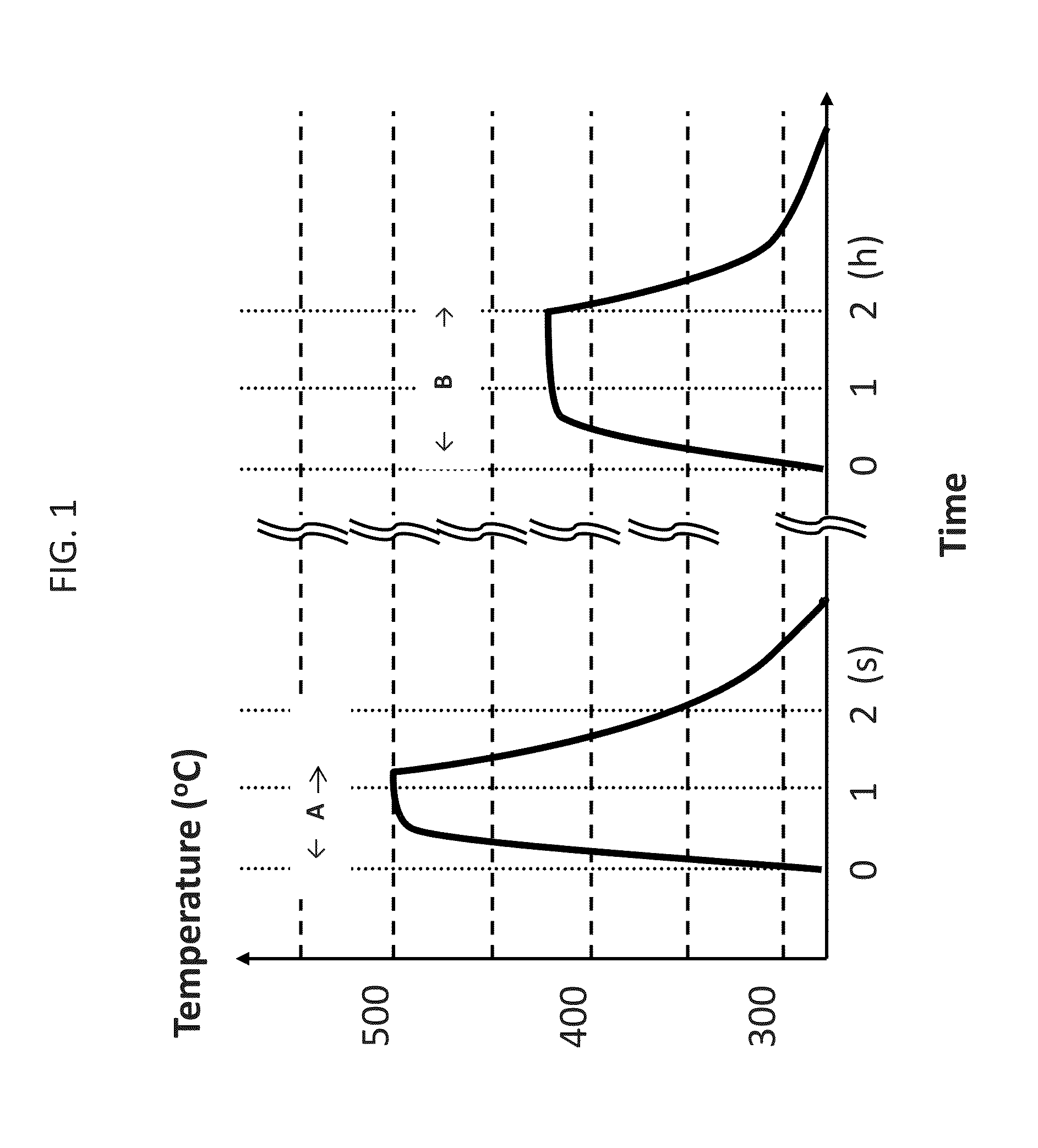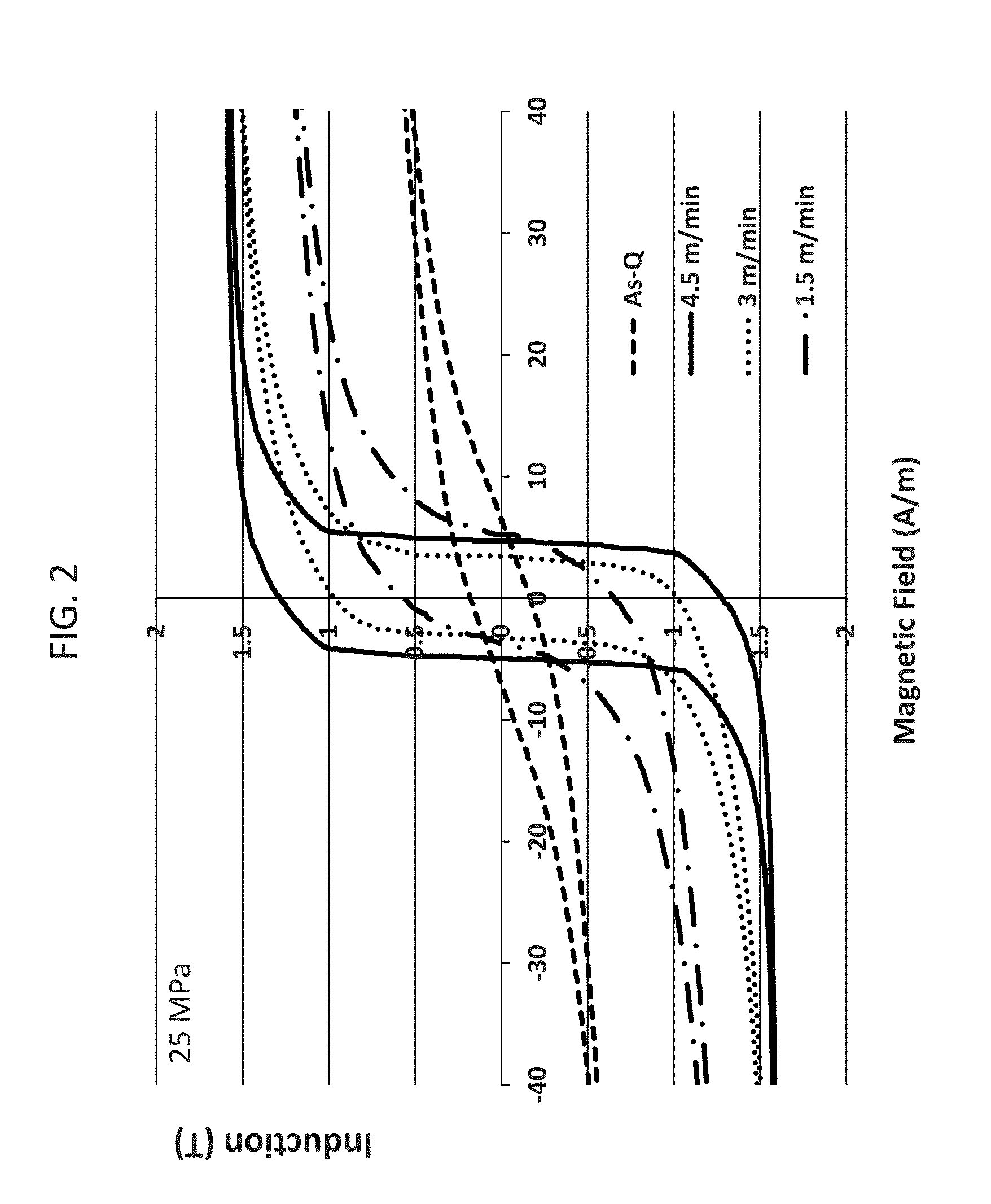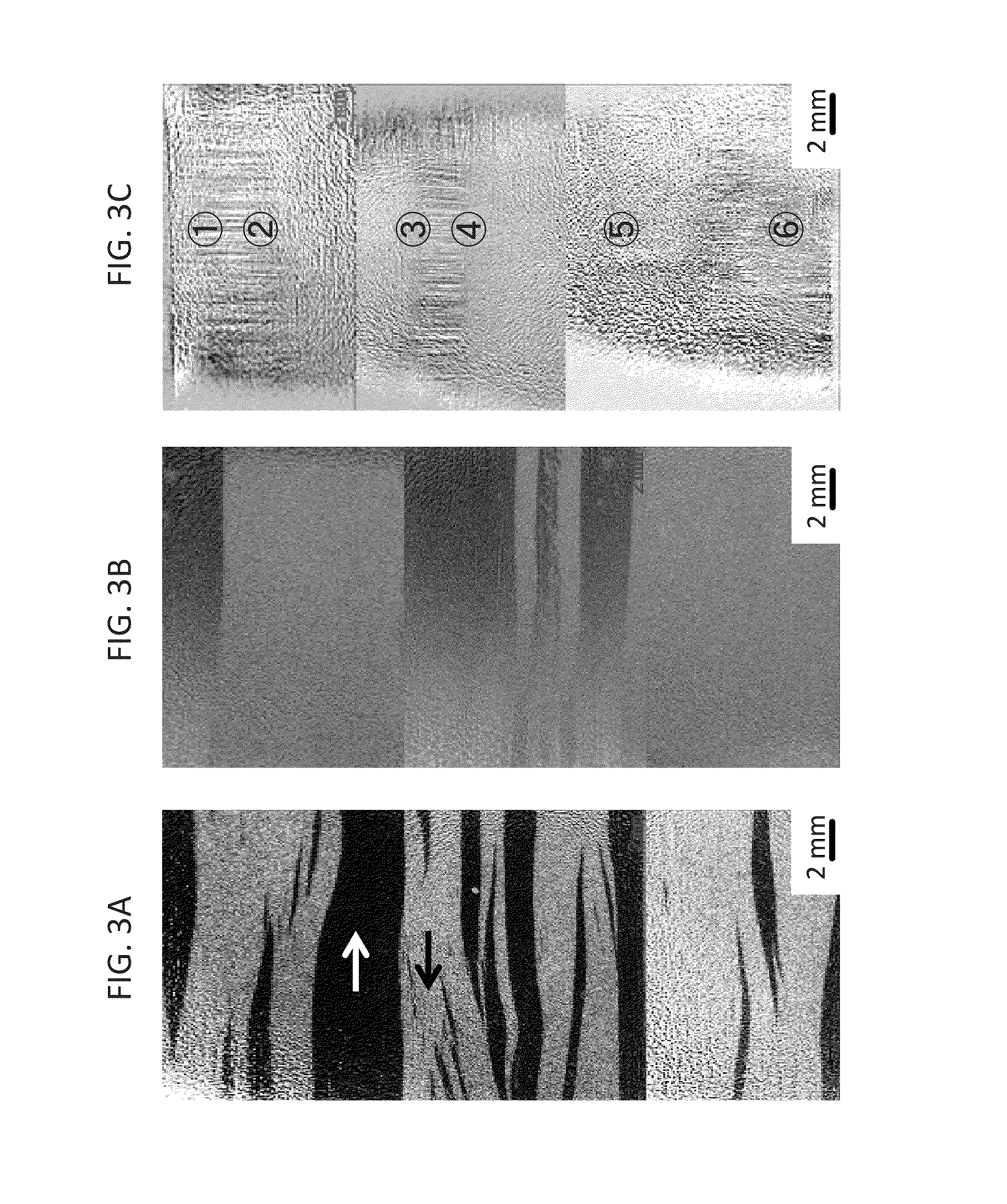Nanocrystalline magnetic alloy and method of heat-treatment thereof
a technology of nanocrystalline magnetic alloy and heat treatment method, which is applied in the manufacture of magnetic materials, inductance/transformers/magnets, magnetic bodies, etc., can solve the problems of high loss of high frequency, high magnetic loss, and high coercivity h/sub>c, so as to suppress the growth of crystalline particles, enhance the thermal stability of the amorphous phase formed, and reduce the atomic diffusion rate of the material
- Summary
- Abstract
- Description
- Claims
- Application Information
AI Technical Summary
Benefits of technology
Problems solved by technology
Method used
Image
Examples
example 1
[0062]A rapidly-solidified ribbon having a composition of Fe81Cu1.0Si4B14 was traversed on a 30 cm-long brass plate heated at 490° C. for 3-15 seconds. It took 5-6 seconds for the ribbon to reach the brass-plate temperature of 490° C., resulting in a heating rate of 80-100° C. / sec. The heat-treated ribbon was characterized by a commercial BH loop tracer and the result is given in FIG. 2, where the light solid line corresponds to the BH loop for an as-cast ribbon, and the solid line, dotted line and semi-dotted line correspond to the BH loops for the ribbon tension-annealed with speeds at 4.5 m / min., 3 m / min., and 1.5 m / min., respectively.
[0063]FIGS. 3A, 3B, and 3C shows the magnetic domains observed on the ribbon of Example 1 by Kerr microscopy. FIGS. 3A, 3B, and 3C are from the flat surface, from the convex and from the concave surface of the ribbon, respectively. As indicated, the direction of the magnetization in the black section points 180° away from the white section. FIGS. 3A...
example 2
[0065]During first heat-treatment of ribbons according to embodiments of the present invention, a radius of curvature developed in the ribbons, although the heat treated ribbon is relatively flat. To determine the range of radius of ribbon curvature, R (mm), in a heat-treated ribbon in which B80 / Bs was greater than 0.90, the B80 / Bs ratio was examined as a function of ribbon radius of curvature which was changed by winding the heat treated ribbon on rounded surface with known radius of curvature. The results are listed in Table 1. The data in Table 1 are summarized by B80 / Bs=0.0028R+0.48. The data in Table 1 is used to design a magnetic core, for example, made from laminated ribbon.
TABLE 1Radius of ribbon curvature versus B80 / BsSampleR, Radius of Ribbon Curvature (mm)B80 / Bs1∞0.9822000.9231500.8941000.725580.656250.55712.50.52
[0066]Sample 1 corresponds to the flat ribbon case of FIG. 3A in Example 1, where the magnetization distribution is relatively uniform, resulting in a large valu...
example 3
[0068]Strip samples of Fe81Cu1Mo0.2Si4B13.8 alloy ribbon were annealed first with a heating rate of more than 50° C. / s in a heating bath at 470° C. for 15 sec., followed by secondary annealing at 430° C. for 5,400 sec. in a magnetic field of 1.5 kA / m. The first annealing heating rate was found to be as high as 10,000° C. / sec. Strips of the same chemical composition were annealed first with a heating rate of more than 50° C. / s in a heating bath at 481° C. for 8 sec. and with a tension of 3 MPa, followed by secondary annealing at 430° C. for 5,400 sec. with a magnetic field of 1.5 kA / m. Examples of BH loops taken on these strips are shown in FIGS. 5A and 5B.
[0069]FIG. 5A shows BH behavior taken on a Fe81Cu1Mo0.2Si4B13.8 sample annealed first with a heating rate of 50° C. / s in a heating bath at 470° C. for 15 sec. (dotted line), followed by a secondary annealing at 430° C. for 5,400 sec. in a magnetic field of 1.5 kA / m. FIG. 5B shows the BH behavior taken on a sample with the same comp...
PUM
| Property | Measurement | Unit |
|---|---|---|
| Temperature | aaaaa | aaaaa |
| Temperature | aaaaa | aaaaa |
| Temperature | aaaaa | aaaaa |
Abstract
Description
Claims
Application Information
 Login to View More
Login to View More - R&D
- Intellectual Property
- Life Sciences
- Materials
- Tech Scout
- Unparalleled Data Quality
- Higher Quality Content
- 60% Fewer Hallucinations
Browse by: Latest US Patents, China's latest patents, Technical Efficacy Thesaurus, Application Domain, Technology Topic, Popular Technical Reports.
© 2025 PatSnap. All rights reserved.Legal|Privacy policy|Modern Slavery Act Transparency Statement|Sitemap|About US| Contact US: help@patsnap.com



